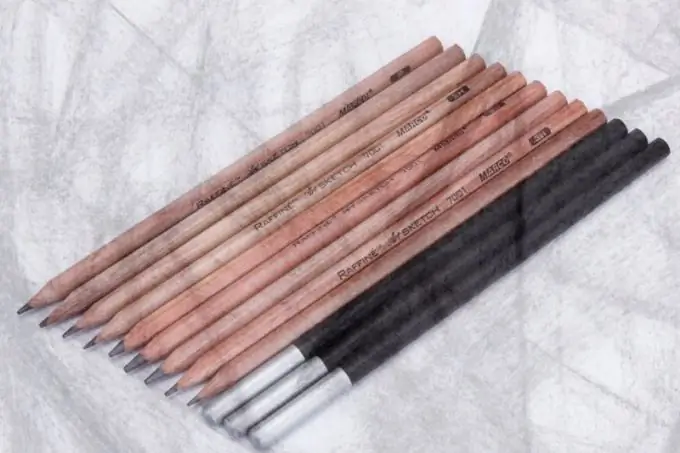Drawing is a way to express yourself, to demonstrate your attitude, an unusual look at everyday things. Today this type of creativity has become a kind of mainstream. Graphics are especially popular due to the availability of tools. You can create a beautiful drawing with a pencil or charcoal.

Features of charcoal and pencil
As a material, coal has been used for many centuries. Its analogue was painted in Ancient Greece. Craftsmen created "charcoal" by mixing charred willow branches, nuts and grapes. The history of the lead pencil dates back to 16th century England.
Pencil and charcoal are different materials. The first is a hard instrument, the second is soft. The drawing technique with these materials differs, first of all, due to these properties. Charcoal, unlike pencil, is not used for detailed objects. The soft material is intended for sketches, sketches, modeling of light and shade.
Charcoal should be used on paper with a rough surface. Otherwise, the material will not adhere well to the base and will quickly crumble. With a pencil, you can draw on the most ordinary paper.
Novice artists are advised to use graphite pencils to master the drawing. You will be able to easily control the line, erase the failed details, drawing them again. These manipulations will not work with coal. It lends itself well to correction, but it can leave unpleasant dark spots. To master both tools, you should be familiar with the basic techniques for using them.
Pencil: basic drawing techniques
The main technique for drawing with a pencil is a line. Depending on the texture of the paper and the type of instrument, it can be clear, pronounced or slightly noticeable. The pencil allows you to qualitatively feel and master the contour drawing. The clarity of the line also depends on the pressure on the tool. With one pencil, you can change the intensity of the outline, highlighting the most important points.
Another technique is shading with a tonality transition. When creating it with a pencil, you need to smoothly change the pressure on the entire area selected for toning. It is very difficult to create beautiful hatches the first time, but constant practice and ease of adjustments will help you quickly master frequently used graphic techniques.
Drawing with charcoal
The main technique for drawing with charcoal is working with the tonality of the image. It will take much less time to master it than when working with a pencil. However, there are some tricks here.
When creating a shadow or working with depth, you should not paint in the same way as with a graphite tool - vary the degree of pressure. Start in the darkest place and gradually loosen up, paint in only 1/3 of the intended space. Then, using a napkin or your finger, blend the material in the desired direction.
Having decided to work with charcoal according to the pencil principle, you will get a sad result: the tinting will quickly lose its properties and turn into a dark, monochromatic spot.
Please note: charcoal is practically not used to draw straight, smooth lines. With its help, mainly toning is created, and also depth to the picture is given. In this case, the initial sketch is often done with a pencil (thin dashed lines).
Coal work requires careful handling and storage. To preserve the image without deformation, it should be placed under glass. You can also use a special fixer or simple hairspray.






